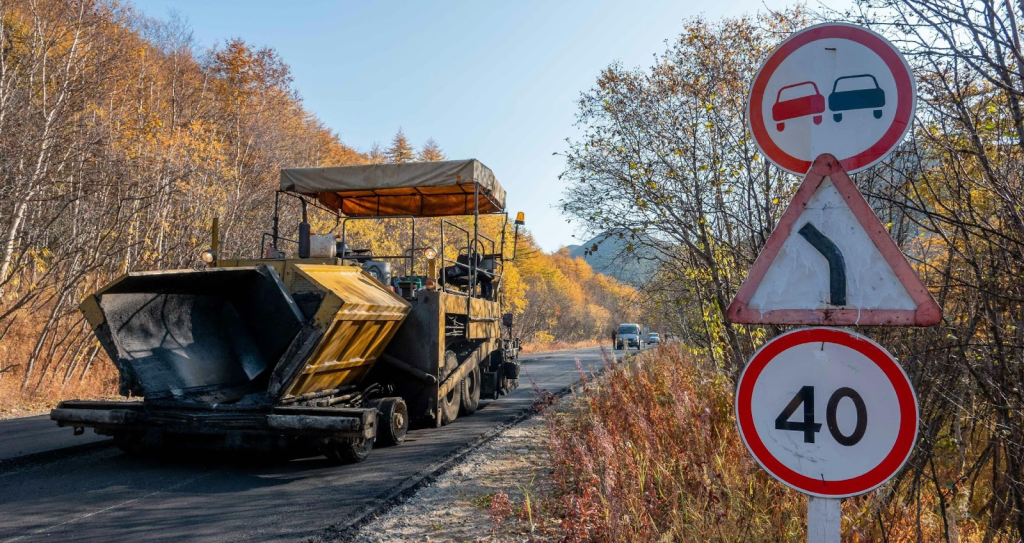Controlling dust on a construction site is crucial to protect workers’ health, maintain compliance with environmental regulations, and ensure seamless project operations. Dust is not only a nuisance, but it can also lead to respiratory problems, create safety hazards due to poor visibility, harm surrounding property, and elicit community complaints. Good dust management begins by finding out its sources, which include excavation, demolition, vehicle movement, and material handling. Some common strategies include frequent watering of exposed surfaces, applying dust suppressants, covering soil piles, using wind blockers, and implementing speed limits for site vehicles. More sophisticated procedures, such as misting systems or soil stabilizers, can also be required in major undertakings.
For contractors and developers, dust management is not just about compliance; it directly impacts project budgets, schedules, and overall planning. A professional construction cost estimator often includes dust control strategies in the estimating process because neglecting them can result in unexpected fines, equipment damage, worker health risks, and costly delays. By incorporating preventive methods and accurately calculating dust volumes, contractors can minimize risks, reduce liabilities, and maintain safer working environments. A detailed estimate that accounts for dust control helps ensure projects meet regulatory standards, avoid budget overruns, and stay on track with deadlines.
Effective Methods to Control Dust on Construction Sites
1. Watering and Spraying
The simplest and least expensive approach is by water trucks or hoses, to spray bare soil and dusty roads. Maintaining the floor wet does not allow particles to become airborne. Nonetheless, the method must be periodically used, and it might not be applicable in water-restricted areas.
Best use: Earthmoving, grading, demolition, and dirt roads.
2. Dust Suppressants and Soil Stabilizers
To stabilize the soil particles on the surfaces (unpaved), the chemical suppressants may be sprayed, like calcium chloride or solutions composed of lignin. They are long-lasting compared to water and minimize the reapplication rate.
Best use: Long-term projects in dry climates or areas with limited water access.
3. Vegetative Cover or Mulching.
In large sites, the surface is covered with vegetation, mulch, or geotextile fabric to stabilize the soil when the soil will be exposed over a long period. It is common to use temporary seeding using fast-growing grass.
Best use: While doing large-scale infrastructural work or in cases of soil disturbance, pause.
4. Wind Barriers and Fencing
Solid or semi-solid fences (such as mesh fences, wooden panels, or fabric screens) can be installed over open spaces to minimize the speed of wind in those spaces, limiting the release of dust. Barriers must be high enough to be over the stockpile or activity area.
5. Stockpiles and Materials.
Aggregates, sand, or stockpiles of soil should be covered with tarps or plastic sheets when not being used. Stabilizers or water spray to stockpiles is also effective during extended periods of time.
Best use: Sites that contain high stored materials that are exposed to wind.
6. Limiting Vehicle Movement

Trucks and machinery used on unpaved surfaces create a lot of dust. It can be helped by limiting the traffic, lowering the speed limits, or constructing temporary access roads. Wheel-washing stations are also fitted at the site exits in most cases to ensure that dirt does not spread to the public roads.
Best use: Busy sites with heavy truck traffic.
7. Vacuum Systems and Wet Cutting
In reducing or scraping materials, wet techniques (water on saws and drills) or attaching tools to dust-collecting vacuum pockets will ensure that fine particles are not scattered. These controls are necessitated by OSHA when handling silica dust.
Best use: Demolition, concrete cutting, masonry, and woodworking.
8. Personal Protective Equipment (PPE)
There will always be some dust penetration regardless of the most effective control methods. Employees are advised to wear dust masks or respirators that are of fine-particle rating, particularly in situations where silica is involved or dangerous materials. Protection is also offered by safety goggles and protective clothing.
Best use: All construction activities with high dust exposure.
9. Regular Site Maintenance
Dust does not accumulate due to sweeping, watering, and cleaning high-traffic areas. Street sweeping the surrounding roads will aid in avoiding dust exportation off-site.
Best use: Large projects in residential or city areas.
Why Dust Control Matters
Health and Safety:
Dust, particularly silica dust when cutting concrete or stone, is the cause of respiratory diseases such as silicosis, asthma, or chronic obstructive pulmonary disease (COPD). Small particles may remain in the air a long time, exposing all the people on-site.
Environmental Impact:
Dust spreads easily with the wind and pollutes the surroundings, vegetation, and may cause grievances amongst the neighbors. Dust pollution can even get into homes and businesses in urban construction areas.
Regulatory Compliance:
In the U.S., there are stringent rules against air and dust exposure through agencies such as OSHA (Occupational Safety and Health Administration) and EPA (Environmental Protection Agency). Inability to manage dust may lead to fines and closures of projects.
Productivity and Visibility:
Dust clouds are also heavy, and visibility becomes a problem, and hard to run machinery in such situations. This not only heightens the chances of accidents, but also decelerates the work.
Common Sources of Dust on Construction Sites
The first thing to know is the origin of dust before we discuss control methods:
- Earthmoving activities: Digging, grading, and excavation reveal vast beds of soil.
- Demolition work: The dismantling of concrete, bricks, or drywall results in air particles.
- Traffic on unpaved surfaces: Moving on the dirt roads, the trucks and the equipment cause the stirring of the dust.
- Material handling: Cutting, grinding, or drilling of stone, concrete, and wood produces fine dust.
- Stockpiles: Exposed heaps of sand, soil, or gravel emit particles when blown upon by the wind.
These sources can be used in understanding the appropriate dust control strategy.
Developing a Dust Control Plan
Contractors ought to develop a site-specific dust control plan to ensure good outcomes when work begins. This plan should include:
- Identification of dust-producing activities.
- Chosen control methods for each stage of construction.
- Schedule and frequency of dust suppression.
- Assigned personnel to check the dust.
- Emergency measures in case of excessive dust or complaints.
Documenting dust control efforts not only ensures compliance but also builds trust with regulators and the community.
Challenges in Dust Control

Although it is possible, dust control may be a difficult task because of:
- Weather: It is hot, dry, and windy, which increases the difficulty of dealing with dust.
- Availability of water: Areas that have drought constraints curtail the spraying of water.
- Cost factor: Suppressants/barriers are an added cost to projects.
- Large sites: Management of dust is a matter that needs planning and coordination.
It is important to balance effectiveness and cost as well as the environment.
Conclusion
It is not only a regulatory obligation to control dust in construction sites, but it is also a duty to the workers, communities, and the environment. Contractors can reduce airborne dust by employing established techniques of watering, dust suppressants, stockpile coverings, and minimizing the number of vehicle movements. The use of protective equipment and regular monitoring to supplement these makes the project execution safer, cleaner, and efficient.
With a planned dust control approach, complaints are reduced, workers are safer, and the project remains compliant and on schedule. Dust in construction can appear minute, but its proper management is a plus.
FAQs
Why is dust control important on construction sites?
Dust management is of primary importance since dust can adversely affect the well-being of the workers, visibility, equipment performance, and provoke complaints among the residents. Dust management can also prevent construction projects from facing fines and legal penalties because it allows them to meet environmental and safety standards.
What are the most effective methods for controlling dust?
The best approaches to dust control are the use of water sprays or dust misting systems, covering or stabilizing the soil with mulch or gravel, application of dust suppressants, installation of barriers or windbreaks, and speed limits that control vehicles at the site.







